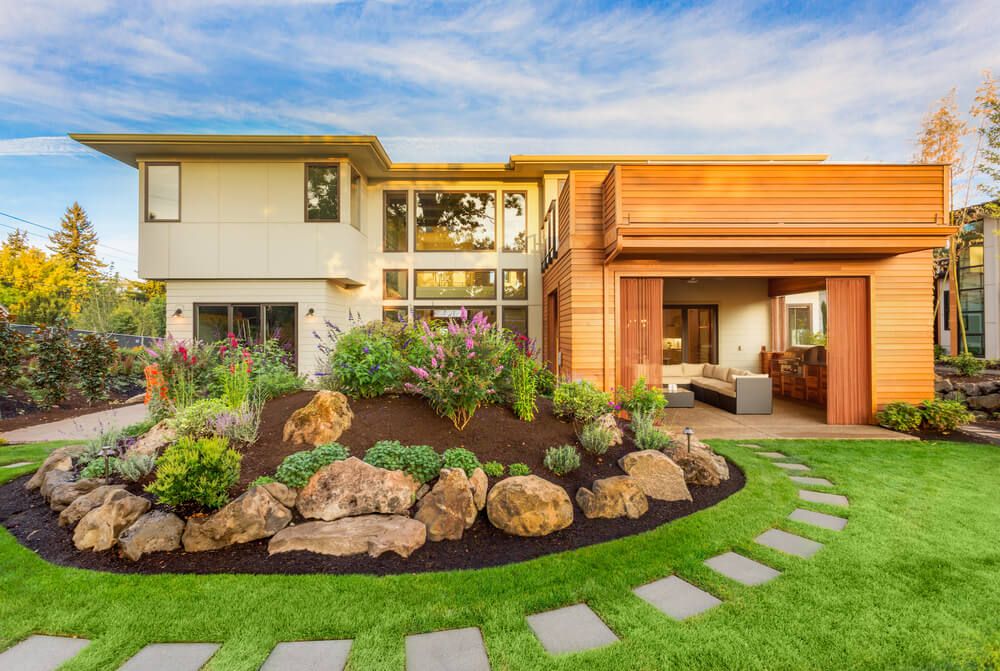 It’s official. Summer is finally here. If your garden is looking a little sad and needs some sprucing up, don’t despair. With some landscaping tricks, you can transform your outdoor space into a beautiful oasis that you and your family will enjoy all season long.
It’s official. Summer is finally here. If your garden is looking a little sad and needs some sprucing up, don’t despair. With some landscaping tricks, you can transform your outdoor space into a beautiful oasis that you and your family will enjoy all season long.
Whether you have a small outdoor space or a large one, figuring out what to do with it is often a challenge. In this post, we’ve compiled best landscaping ideas and designs to get you inspired. By following a few simple tips, you can create a beautiful and functional yard that will be the envy of your neighborhood, and your friends won’t want to leave.
Garden landscaping ideas
Landscaping doesn’t have to be complicated or expensive to be effective. With some planning, you can easily bring some life into your front and back yards and increase your home’s curb appeal. A few simple landscaping ideas can make a huge difference in how your garden looks and feels.
Flower beds
When selecting plants for your flower beds, choose native plants that naturally grow in your area. Not only do they require less maintenance, but they are also better for the environment. They are typically more drought-tolerant than non-native plants, so you’ll save water too. Native plants also attract local wildlife like birds and butterflies.
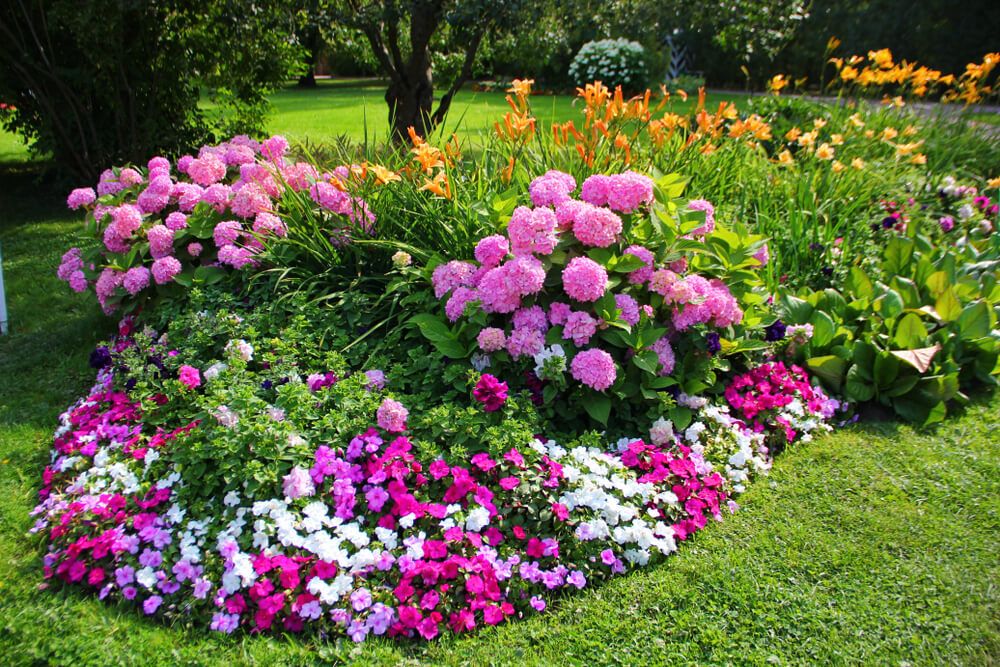
Create layers. One of the most important things to remember when landscaping is to create layers. You can add depth and interest to your flower beds by using various plants at different heights. Tall plants like sunflowers or hollyhocks can add height in the back, while shorter plants like impatiens or pansies can be used in the front.
Include a mix of annuals and perennials. Annuals are great for adding color and variety to your flower beds, but they only last one season. Perennials, on the other hand, come back year after year. A mix of both will give you a beautiful garden that you can enjoy for many years.
Vegetable and herb garden
Consider adding a vegetable or an herb garden. Not only will you have fresh veggies at your fingertips, but you’ll also save money by not having to buy them at the store. Plus, it’s a great way to get your kids involved in landscaping and gardening.
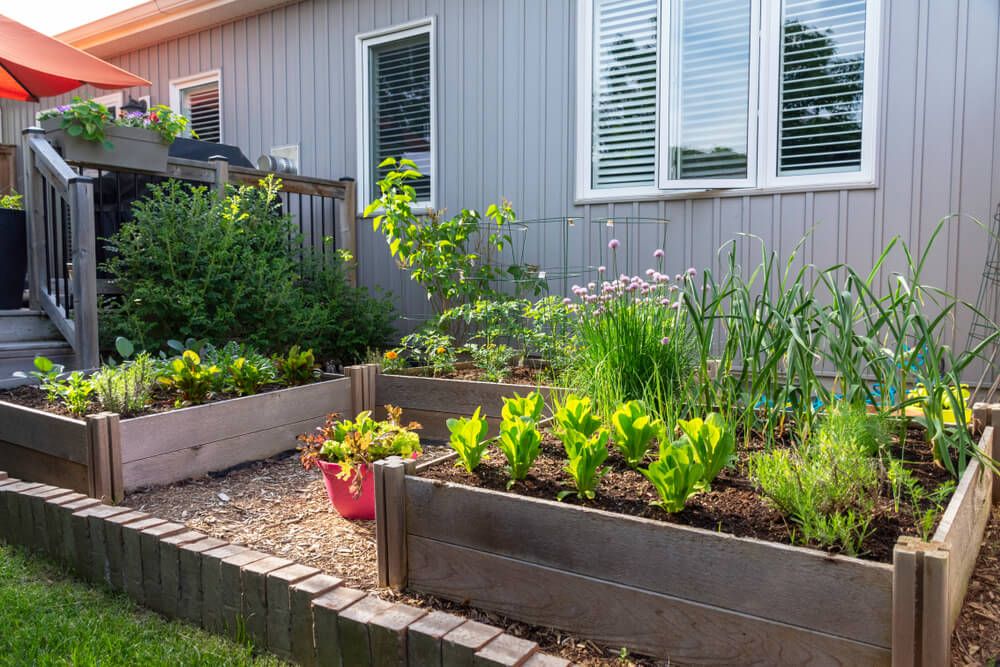
When planning your vegetable garden, choose plants that do well in your climate and soil type. Tomatoes, for example, require full sun and well-drained soil.
If you’re short on space, consider planting vegetables that can be grown in containers, like tomatoes, peppers, or herbs. You can also try vertical gardening, which is a great way to maximize space in a small area.
English country garden
Looking for a landscaping style that is classic and timeless? Then look no further than the English country garden. This type of garden is characterized by its relaxed and informal style. It typically includes a mix of flowers, herbs and vegetables, all arranged in a cottage-style setting.
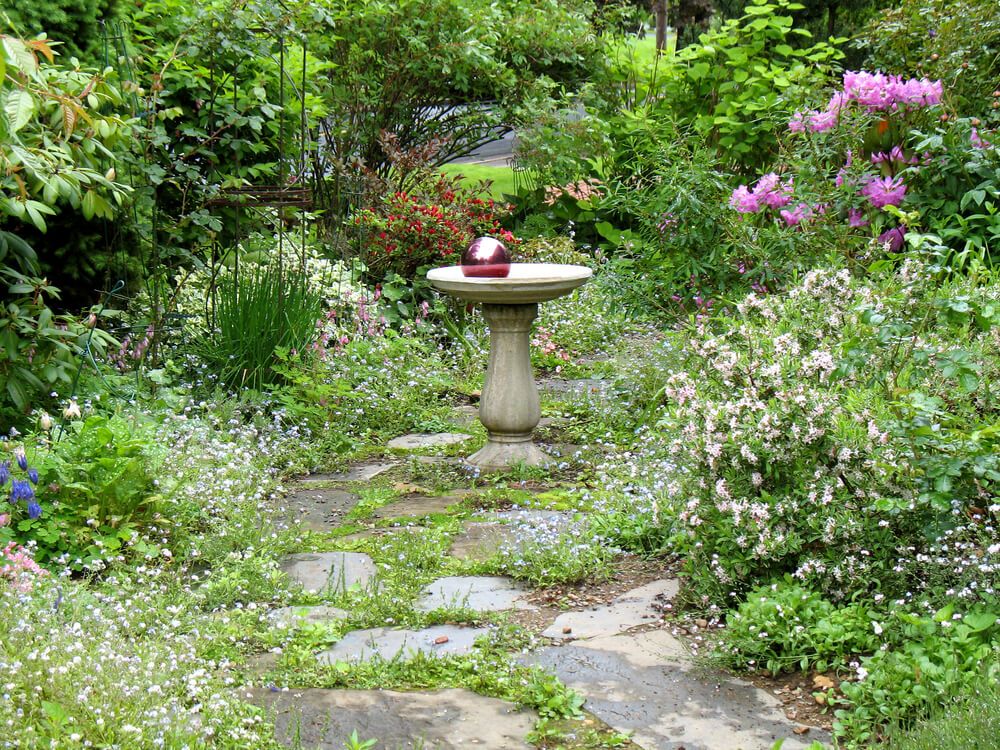
Remember to include plenty of fragrant flowers when creating an English country garden. Roses, lavender and lilacs are all excellent choices. You’ll also want a mix of annuals and perennials to give your garden a varied look.
Japanese garden
For a landscaping style that is both beautiful and serene, consider creating a Japanese garden. This type of garden is known for its simple and minimalist design.
When planning a Japanese garden, choosing plants native to Japan, like bamboo, cherry blossoms and maples, is essential. You’ll also want to use a variety of rocks and stone features to create a tranquil setting. If possible, add a water feature.
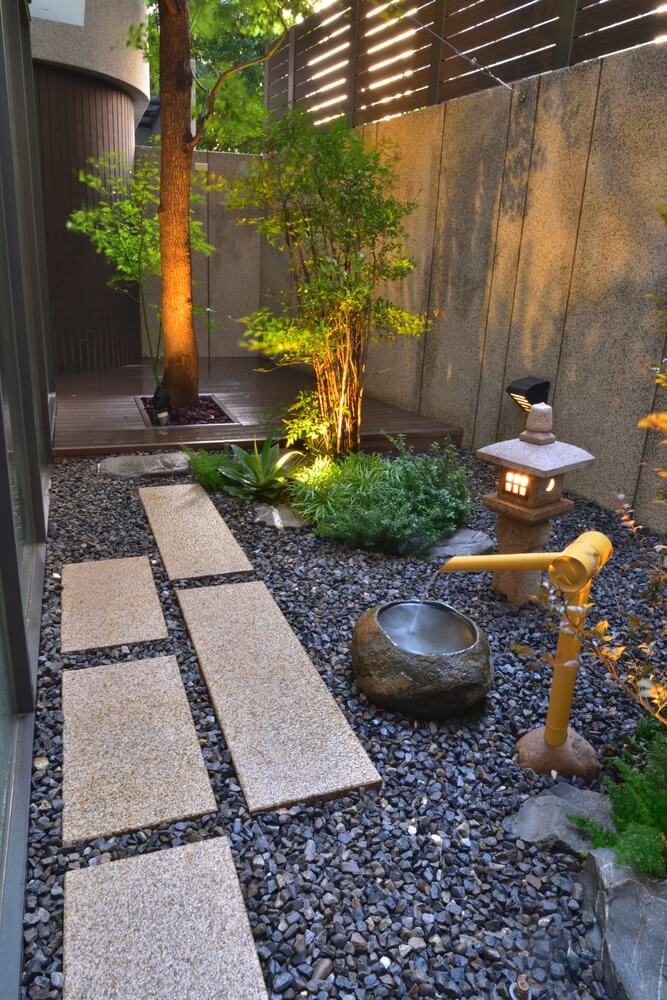
Desert landscaping
If you live in a desert climate, you can still create a beautifully landscaped yard. When landscaping for a desert climate, it’s important to use plants that require little water. A variety of drought-tolerant plants and grasses will do well in this environment.
Cacti and succulents are excellent choices, as they can store water in their leaves and stems. You’ll also want to use rocks and gravel to help with drainage and keep your landscaping low-maintenance.
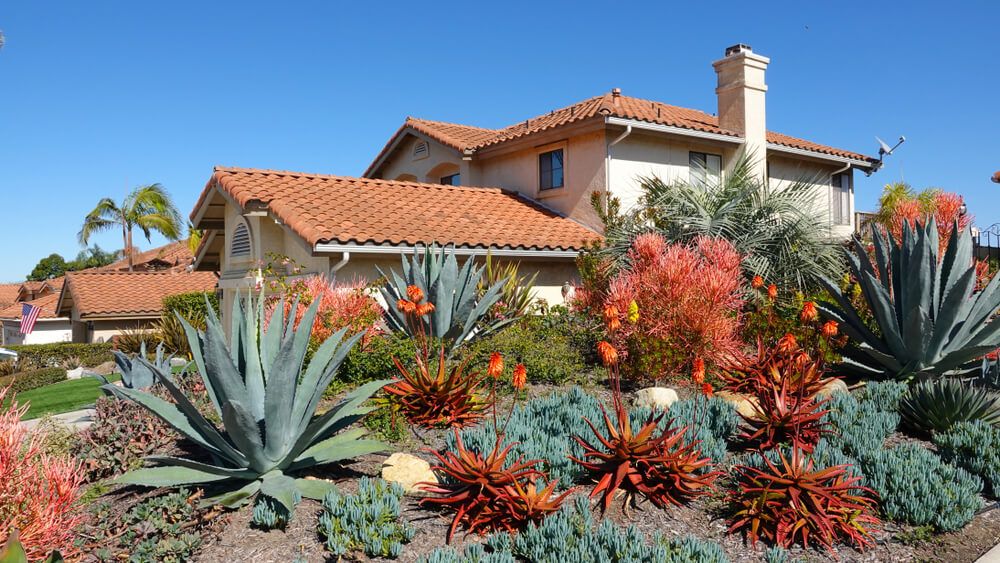
Mulch
Mulching is a landscaping must-do. It helps suppress weeds, retain moisture and keep your plants healthy. It’s also an easy way to add some extra flair to your garden. Consider using colored mulches or ones with an interesting texture.
Paths and walkways
You can include paths and walkways in your design if you have a larger outdoor space. This landscaping idea is not only functional but can also add visual interest to your yard. Use materials that complement your home and landscaping style when planning your paths. For example, using stone or brick for your path would be a good choice if you have a rustic country home.
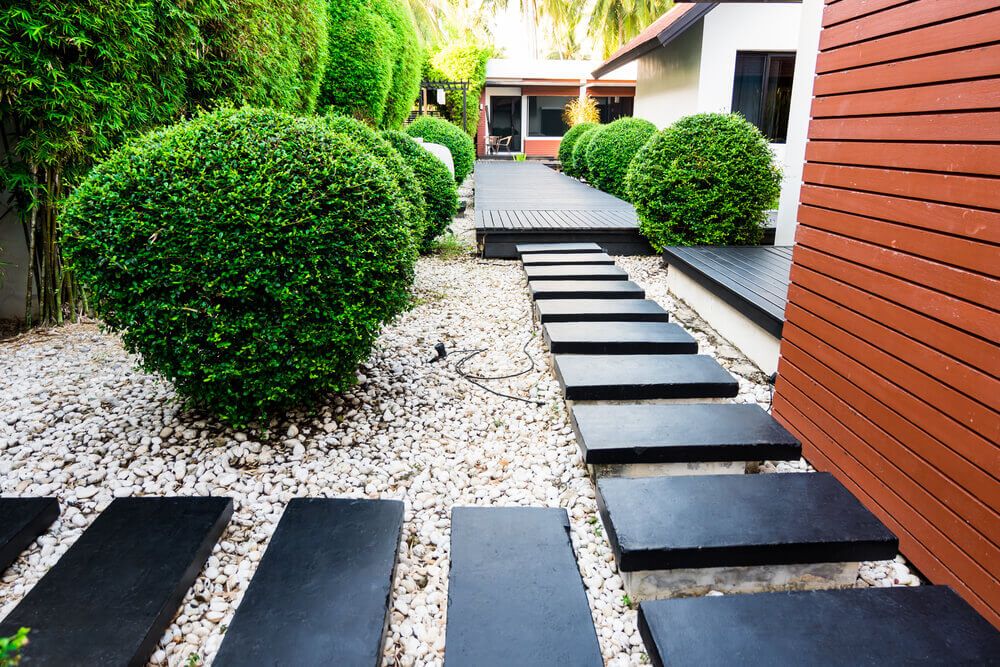
Paths can be created using gravel, flagstone or stepping stones, mulch or rocks. You can plant flowers along the paths or line them with shrubs or lilacs. Add lights along the walkways to illuminate them at night.
Water features
Water features add visual interest and can create a relaxing ambiance. If you have a small space, consider a simple fountain or birdbath. For a larger space, you could add a pond or waterfall. Just be sure to include a pump to circulate the water and keep it clean.
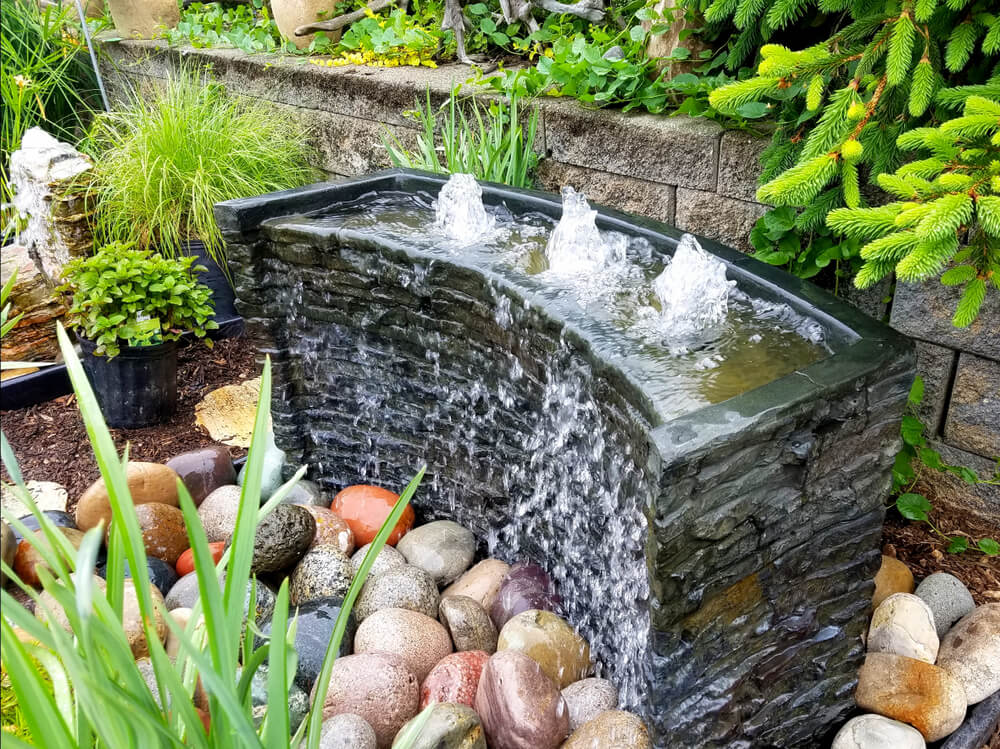
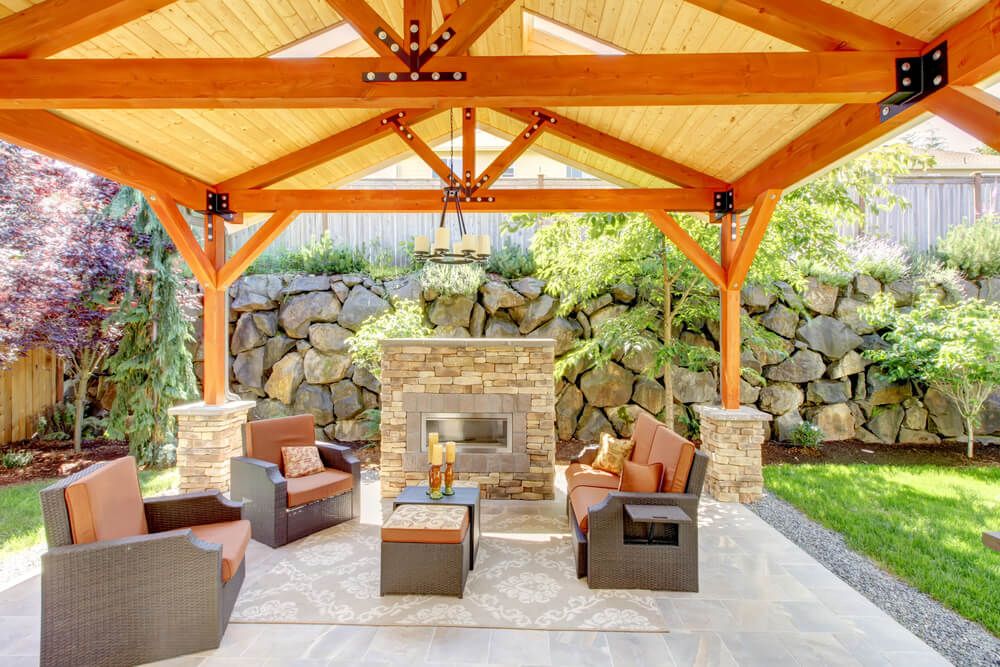
When landscaping your backyard, it’s essential to consider your climate. If you live in an area with a lot of rain, you’ll want to choose plants tolerant of wet conditions. If you live in a desert climate, you’ll need to select plants that can survive in dry conditions. Cold, harsh winters and extremely hot summers can also damage your landscaping, so it’s best to use materials that adapt and withstand the weather.
Backyard ideas without grass
There are plenty of options if you’re looking for good landscaping ideas that don’t require grass. Consider using ground cover plants, such as creeping phlox or sedum, in place of grass. These plants are low-growing and require little maintenance. Other options include paving stones, gravel, or artificial grass. You can also use these materials to create paths, patios or seating areas.

Sloped backyard ideas
If your backyard is on a slope, there are a few options to consider. Leveling your yard can offer more space but can also be expensive. Unless you know exactly what you’re doing, it’s better to consult a professional for a quote. You can always make the best of your sloped backyard without leveling it.
Consider creating raised garden beds, terraces and walkways to create level areas in your yard. These solutions will not only add interest to your landscaping but will also help to prevent erosion. Select plants that are tolerant of gradients and don’t require much maintenance. Finally, include some drainage in your landscaping to prevent water pooling on your slope.
Gazebos and pergolas
Adding a gazebo or pergola to your landscaping can create a beautiful and inviting space. These features provide shade and can be used for entertaining or simply as a place to relax. Be sure to consider the size and placement of your gazebo or pergola before you begin construction. You’ll also want to ensure the structure is properly anchored and secured to prevent it from being blown away in high winds.
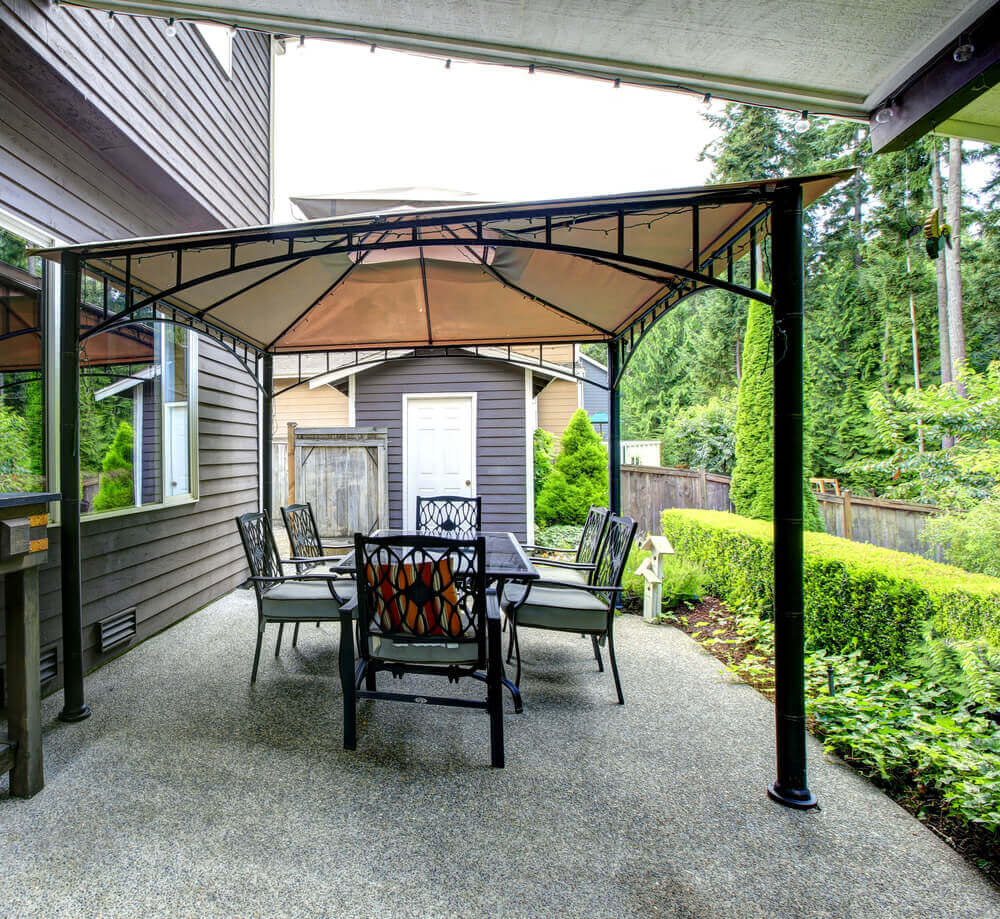
Decks and patios
If you’re looking for a place to entertain guests or simply want to enjoy your outdoor space, consider adding a deck or patio. You can use both for dining, entertaining or relaxing. They can also add visual appeal to your garden and increase your home’s value.
Be sure to choose materials that are durable and can withstand the weather. Treated wood, stones and pavers are excellent materials for creating outdoor entertainment areas. You’ll also want to ensure that your deck or patio is designed and built to code with proper safety measures, especially if you’re building multi-level structures.
Pools
If you’re lucky enough to have a backyard with room for a pool, consider adding one to add a fun element to your garden. A pool can become a cool and refreshing oasis the whole family can enjoy on hot summer days.

For a more affordable option, consider an above-ground pool that requires less maintenance and is quicker to install. Be sure to choose a size and shape that will fit your yard and consult with a professional before getting one, especially if you’re considering an in-ground pool. You’ll also want to ensure that your pool is fenced off to keep small children and pets from falling in.
Front yard landscaping ideas
Including landscaping in your front yard can completely transform the look of your home. When landscaping your front yard, it’s essential to consider the look of your home and the neighborhood. You’ll want to choose plants and materials that will complement the look of your home and add to its curb appeal.
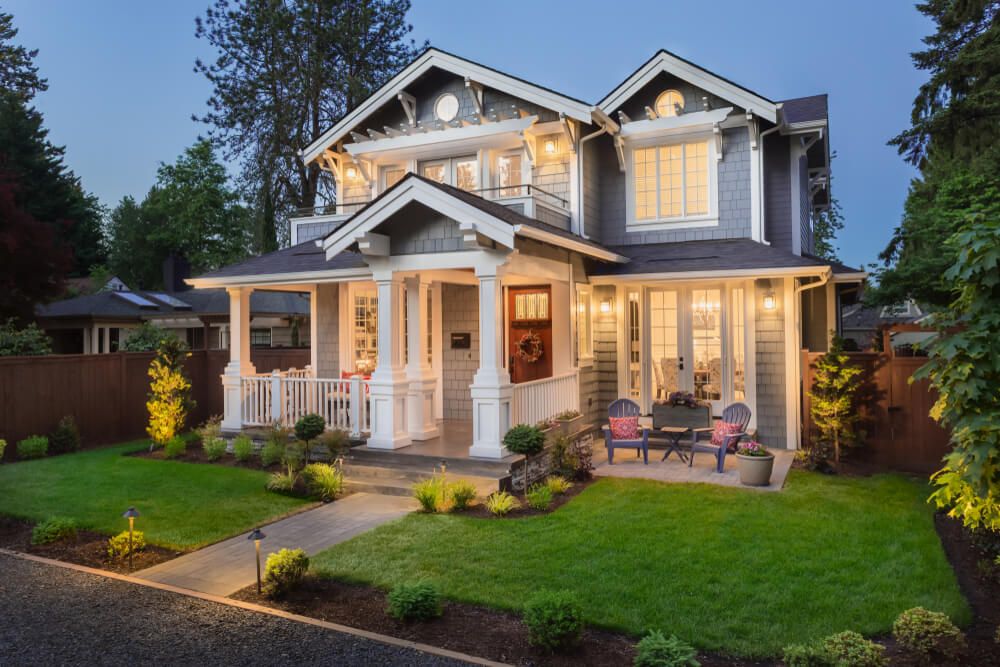
Consider landscaping that doesn’t block windows and entrance doors and won’t interfere with your neighbors. Consult local regulations as certain neighborhoods might also have specific rules for how your home should look, including what can be planted in front of the house.
Walkways and paths
One of the most important front yard landscaping ideas is to create a clear path to your front door. This can be done with various materials, including paving stones, gravel or brick. You’ll also want to ensure that your path is wide enough for two people to walk side-by-side and is clear of any obstacles. Be sure to choose materials that complement the look of your home.
Flower beds
Planting flower beds can brighten up your home and make it more inviting. Choose appropriate plants for the amount of sun and shade they’ll receive. You’ll also want to consider the plants’ height to ensure they won’t block windows or doors. Add mulch to your flower beds to help prevent weeds and moisture loss.
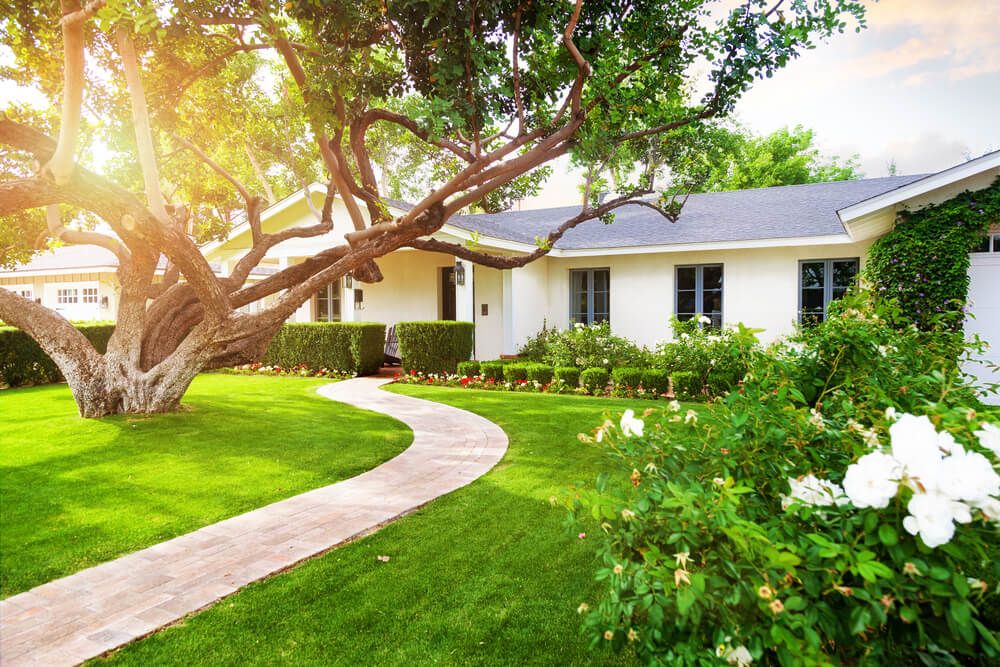
Driveway landscaping ideas
When landscaping your driveway, it’s important to consider both function and style. You’ll want to choose durable materials that can withstand the wear and tear of cars driving over them. You’ll also want to ensure that your landscaping doesn’t interfere with the drainage of your driveway. Consult a professional before landscaping your driveway to ensure it’s done correctly.
Porches
Depending on its size and style, your front porch can be a great alternative to entertaining and relaxing. If you have a small porch, consider adding potted plants or hanging baskets to add color and interest.
You might want to add patio furniture and lighting to create a cozy entertainment space if you have a large or wrap-around porch. Be sure to choose materials that are durable and can withstand the weather.
Must-have essentials for garden design
When landscaping your garden, no matter what size, you’ll need a few essential things to create a functional and stylish space.
Lighting
You’ll need lighting for function, style and safety. Consider solar lights, string lights, or even lanterns. They will brighten up your space at night and illuminate the ground, so it’s easier to get around without tripping on something in the dark.
You can also add lights along garden paths and walkways or illuminate water features or pools. String lights and add lanterns to your porch or deck to enjoy entertaining after dark.
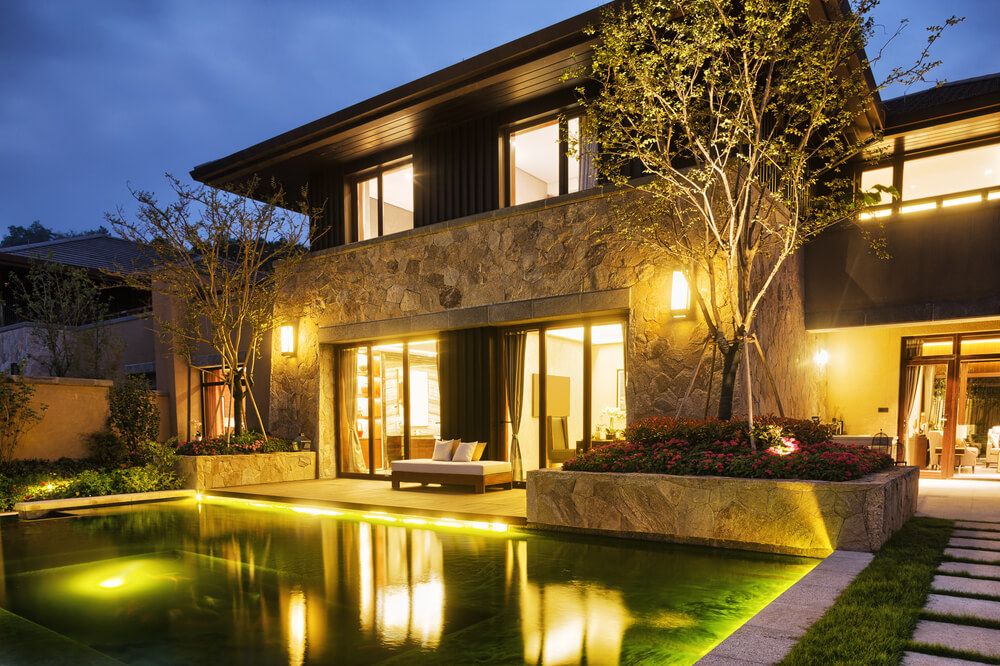
Outdoor furniture
Every great garden requires a place for relaxation and entertainment. A bench, a set of lounge chairs, hammocks, or even a pile of cushions can provide a place to relax and enjoy your landscaping.
Add multi-function seating and tables if you plan to entertain large groups of people. Choose materials that are weather-appropriate and don’t require a lot of maintenance. Wicker, teak and treated wood are great options for outdoor furniture.
Fire pits or chimeneas
A fire pit or a chimenea can be great additions to your garden. These features are great for gathering and socializing. Fire features also create intimacy and coziness, making you want to stay out longer. They are especially enjoyable during cooler evenings. Make sure to follow safety guidelines to prevent fires. If wood fire pits are prohibited in your area, consider a gas or propane model.
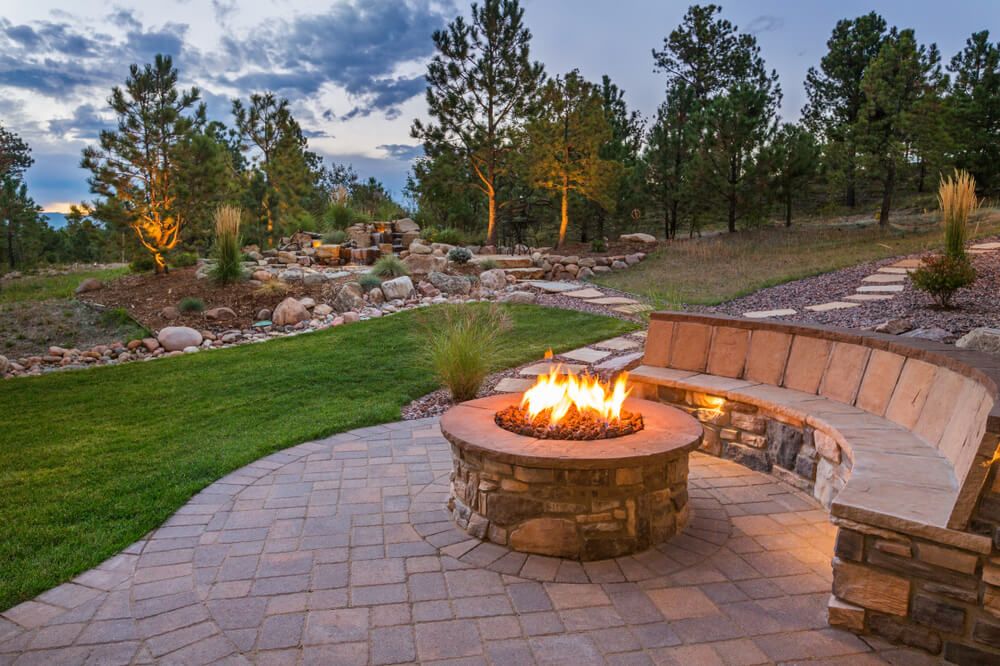
Storage and sheds
If you have a lot of landscaping tools and supplies, you’ll need somewhere to store them. A shed can provide both function and style to your landscaping. You can also use a shed to keep your furniture and other decorative items when not in use. Be sure to choose a size and style that compliments your home.
Irrigation
An irrigation system can help water your garden quickly and efficiently. Be sure to choose a system that meets the need of your space and is easy to use. Consult with a professional before installation to avoid unexpected costs. If you don’t want to water your plants all the time, consider installing a sprinkler system that works on a timer.
Fencing
A fence can provide both function and style to your landscaping design. It can keep pets and children contained and add privacy and security to your home. Be sure to choose a material and style that compliments your outdoor space and home. Always consult with your local municipality for height restrictions and guidelines.
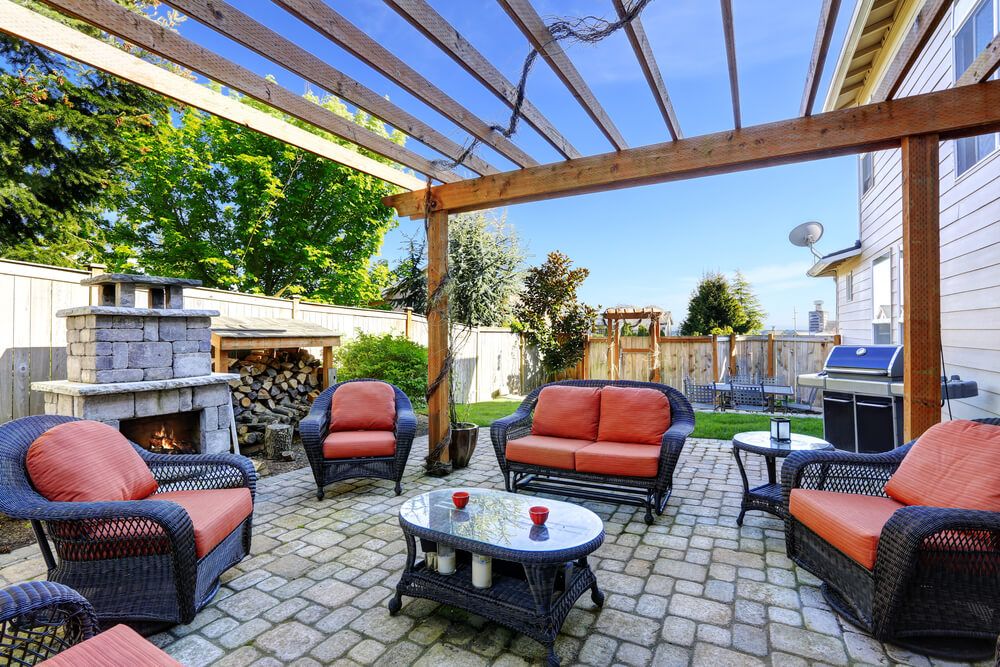
With these nice landscaping ideas, you’re sure to create a backyard that you’ll love. Whether you’re looking for a place to entertain guests or a private retreat, these tips will help you create the perfect space. With a little effort, you can create a beautiful and functional backyard that will be the envy of your neighborhood.
Landscaping ideas FAQ
What is the cheapest type of landscaping?
There are many ways to save money when landscaping, including opting for young plants over mature ones and buying second-hand furniture. The cheapest type of landscaping is typically going to be the DIY route. This means you will do the work yourself rather than hiring a professional landscaper.
How do you make a pretty landscape?
There is no one answer to this question, as there are many ways to create a pretty landscape. Some people prefer a more natural look, while others prefer more formal landscaping. Some people like to add lots of bright colors, while others prefer more subdued landscaping. Ultimately, it is up to you to decide what you think looks best.
How do I design my own landscape?
First, you must consider what you want your landscaping to achieve. Once you know what you want, you can start planning your landscaping project. You’ll need to consider the layout, the type of plants you want to use and the materials you’ll need to create your landscaping. We recommend using Planner 5D software to design your ideal garden and get inspired by other users.
What is the best time of year to landscape?
The best time of the year to implement your landscape design ideas depends on what type of landscaping you’re doing. When planting a garden, the best time to do landscaping is spring. This gives the plants time to grow and bloom before the summer heat sets in. If you’re doing more hardscaping, such as installing a deck or paving a patio, the best time to do landscaping is in the fall. This allows the landscaping to settle before winter weather arrives.







